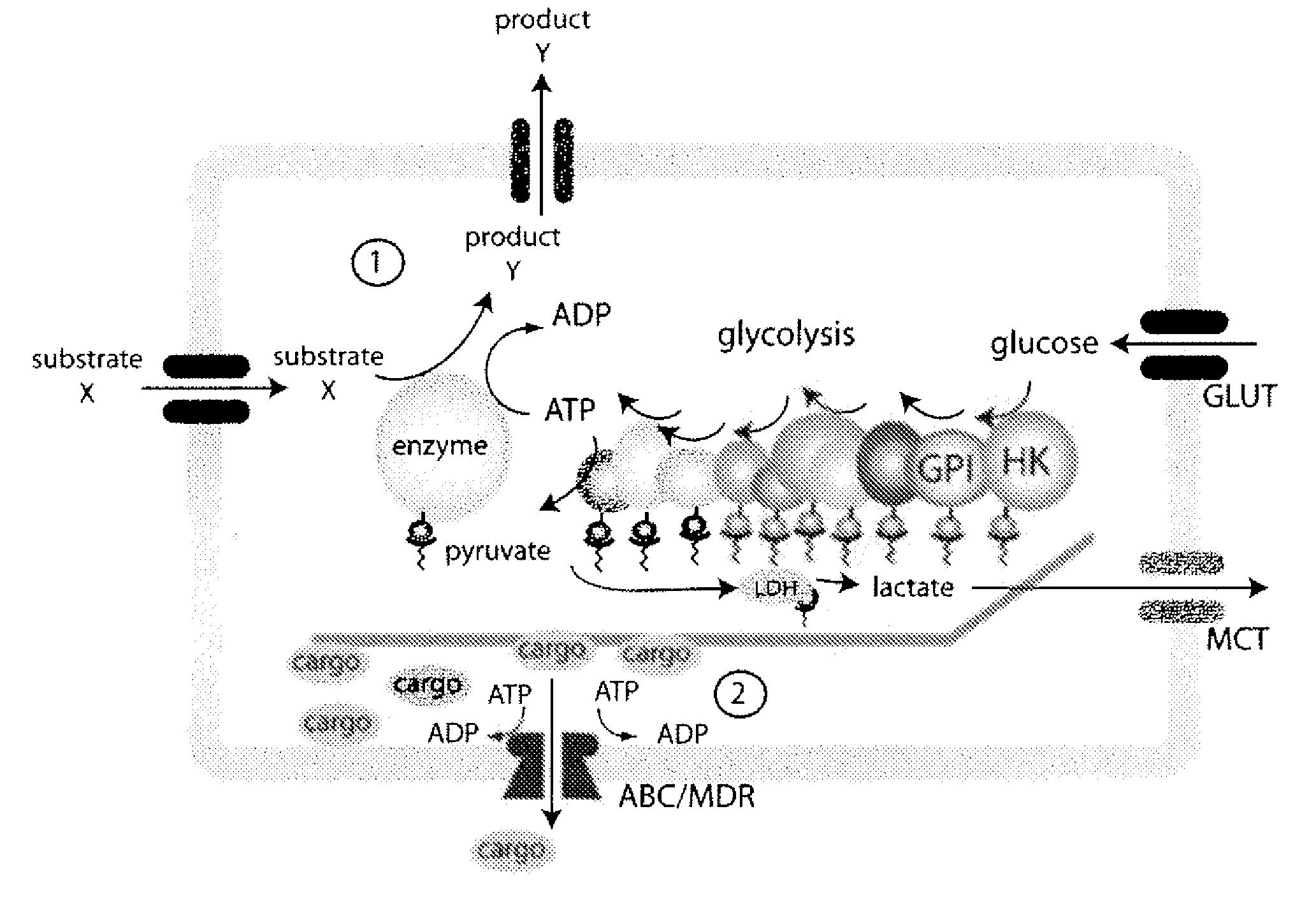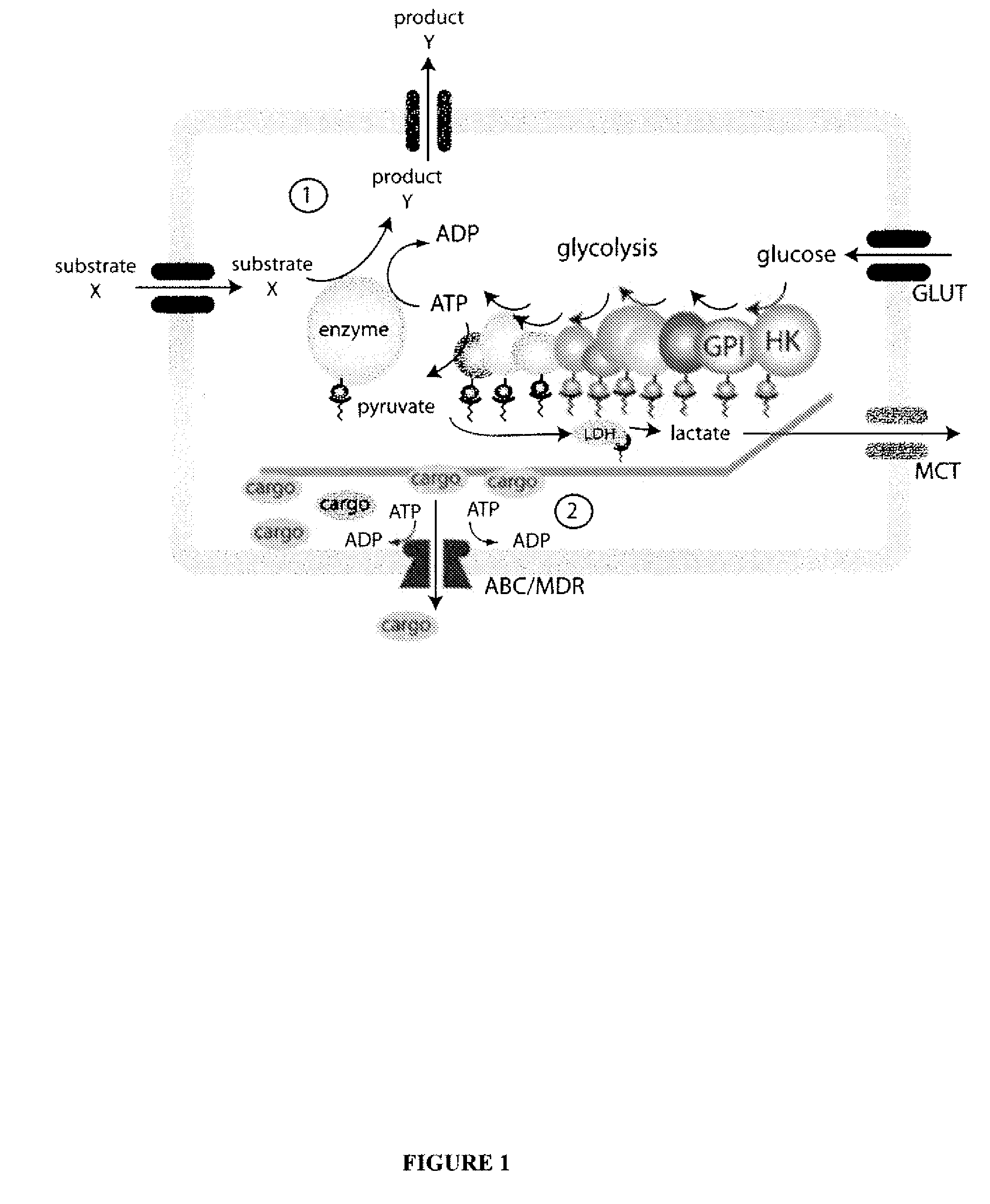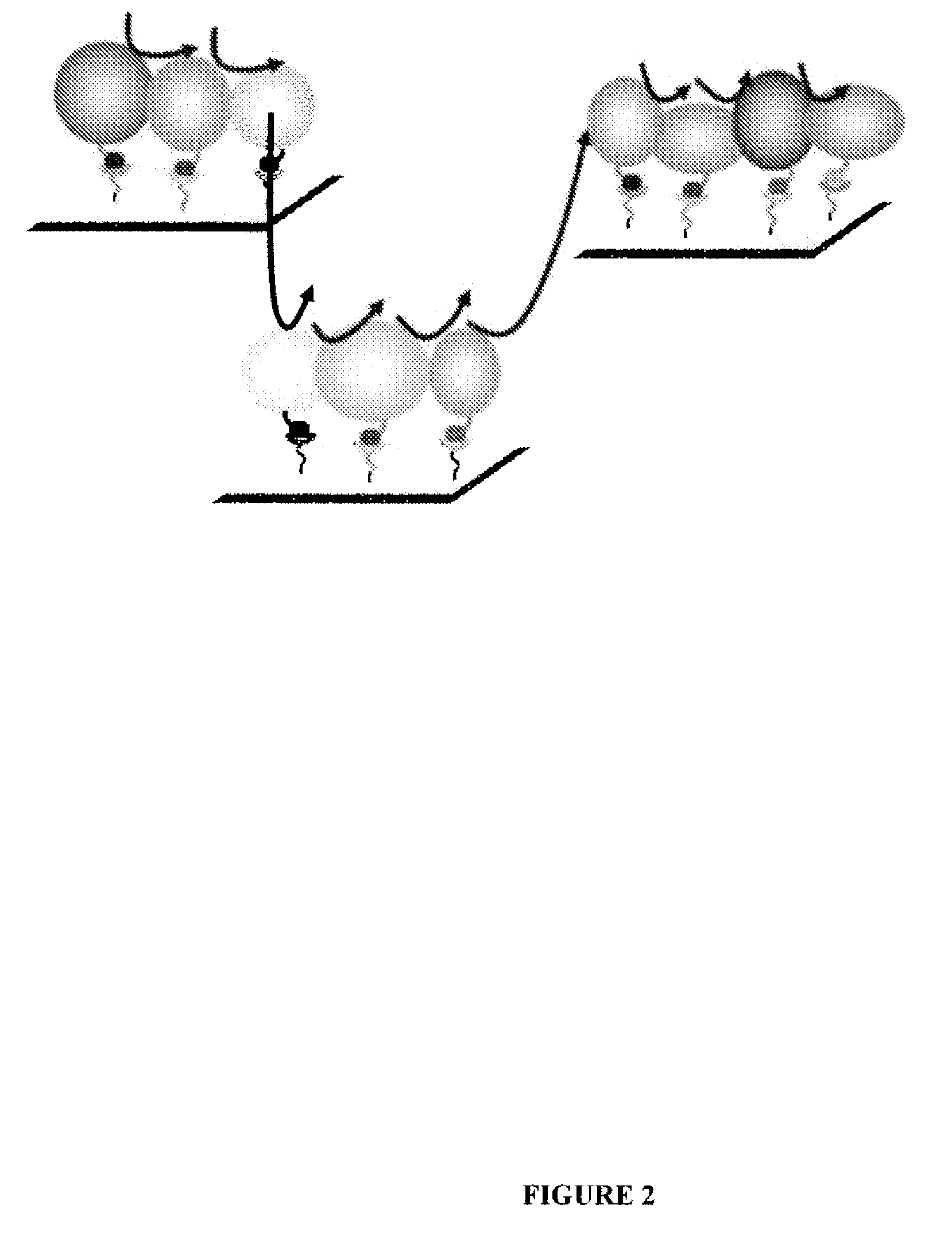System for production of adenosine triphosphate
a technology of adenosine triphosphate and a production system, which is applied in the field of system for production of adenosine triphosphate, can solve the problems of a very small, nanometer-scale powering of such devices, and the critical obstacle to the development and practical use of such devices
- Summary
- Abstract
- Description
- Claims
- Application Information
AI Technical Summary
Benefits of technology
Problems solved by technology
Method used
Image
Examples
example 1
Generation of Recombinant Hexokinase and Glucose-6-Phosphate Isomerase
[0049]All reagents were purchased from Sigma (St. Louis, Mo.), unless otherwise indicated. Full-length HK1-sc and somatic GPI were cloned from mouse testis by RT-PCR using the following primers, 5′-ATGGGACAGAACTGCCAGCGAGGAC-3′ (SEQ ID NO:1)(forward, HK1-sc), 5′-TTAGGCGTTCGTAGGGTCTCCTCTGAGCC-3′ (SEQ ID NO:2) (reverse, HK1-sc), 5′-ATGGCTGCGCTCACCCGGAACC-3′ (SEQ ID NO:3) (forward, GPI), and 5′-TTATTCTAGTTTGGTGTCCCGCTGTTGC-3′ (SEQ ID NO:4) (reverse, GPI). The germ cell-specific targeting domain of HK1-sc was removed by nested PCR using another forward primer, 5′-GAAAAGATTGATAAGTATCTGTATGCCATGCGGC-3′ (SEQ ID NO:5). HK and GPI cDNA were cloned into the expression vector pcDNA4 / HisMax TOPO TA (Invitrogen), which added a 6 histidine repeat on the amino terminus, followed by an enterokinase cleavage site and then the glycolytic enzyme's sequence. Constructs were validated by sequencing and then were transfected into HEK293...
example 2
Generation of Recombinant HK1 and GPI
[0050]The cDNA of a germ cell-specific isoform of HK1 (HK1-sc), and GPI were obtained by RT-PCR from mouse testis RNA, and the germ cell-specific targeting domain of HK (Travis A J, et. al, J. Biol. Chem. 274, 34467-34475 (1990), which is hereby incorporated by reference in its entirety) was removed by nested PCR. The constructs were inserted into a vector that places a hexahistidine tag at the amino terminus, thus replacing the HK1-sc germ cell-specific targeting domain. His-HK and His-GPI were expressed in a mammalian expression system and then purified using a Ni-NTA system. The products were separated using SDS-PAGE and their purity and identity were respectively checked through the use of Coomassie staining and immunoblotting with antibodies against the proteins and against the His-tag. Both recombinant enzymes were found to be highly pure (80-90%, with only slight variations between sample preparations), immunoreactive with the appropriate ...
example 3
Quantification of His-HK and His-GPI Enzyme Activities
[0051]The activity of recombinant proteins individually in solution was examined by means of a coupled reaction pathway, ultimately measuring the reduction of NADP+ by a change in absorbance at 340 nm. For both reactions, exogenous glucose-6-phosphate dehydrogenase (G6PDH) was added, as described above. It was confirmed that the changes in absorbance specifically measured the target enzyme activities by running control reactions in the absence of exogenous G6PDH or substrate, and comparing the values from the experimental proteins versus commercially available purified HK1 and GPI.
[0052]His-HK demonstrated activity without the germ cell targeting region, with a Vmax equal to 11.67 U / mg, and a Km equal to 0.274 mM (glucose) (Table 1).
TABLE 1VmaxKmHis-HK11.67 ± 5.820.274 ± 0.12 His-GPI48.89 ± 8.890.226 ± 0.086
This result was very similar to the values obtained for a commercial HK enzyme in solution (Vm=12.33 U / mg. Km=0.245 mM gluco...
PUM
| Property | Measurement | Unit |
|---|---|---|
| pH | aaaaa | aaaaa |
| volume | aaaaa | aaaaa |
| volumes | aaaaa | aaaaa |
Abstract
Description
Claims
Application Information
 Login to View More
Login to View More - R&D
- Intellectual Property
- Life Sciences
- Materials
- Tech Scout
- Unparalleled Data Quality
- Higher Quality Content
- 60% Fewer Hallucinations
Browse by: Latest US Patents, China's latest patents, Technical Efficacy Thesaurus, Application Domain, Technology Topic, Popular Technical Reports.
© 2025 PatSnap. All rights reserved.Legal|Privacy policy|Modern Slavery Act Transparency Statement|Sitemap|About US| Contact US: help@patsnap.com



